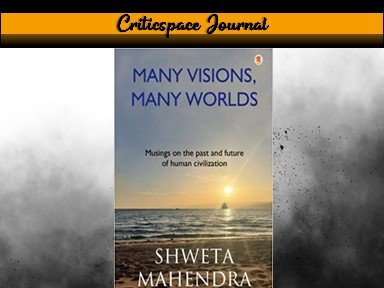
In her book Many Visions, Many Worlds, Shweta Mahendra explores the interconnectedness of the past, present, and future of human civilization. She argues that there are deep connections between mythological descriptions, ancient folktales, and futuristic technologies. Mahendra draws on her own expertise in technology, history, archaeology, and ancient scripts to create a thought-provoking and engaging book that challenges readers to think about the future of humanity.
The book is divided into three parts. The first part, “Myths and Legends,” explores the ways in which ancient civilizations imagined the future. Mahendra discusses the role of mythology in shaping human understanding of the world, and she highlights the many parallels between mythological descriptions and modern scientific theories.
The second part, “The Present,” examines the ways in which technology is changing the world today. Mahendra discusses the impact of technology on our economy, our society, and our environment. She also explores the potential risks and benefits of emerging technologies such as artificial intelligence and gene editing.
The third part, “The Future,” looks at the different ways in which technology could shape the future of humanity. Mahendra discusses the possibility of a post-scarcity society, the rise of artificial intelligence, and the colonization of space. She also explores the ethical implications of these technologies.
Strengths
- Mahendra’s writing is clear, engaging, and thought-provoking.
- She draws on a wide range of sources, including mythology, history, archaeology, and science.
- The book is well-organized and easy to follow.
- Mahendra’s insights are both challenging and thought-provoking.
The Purpose of the Book
The author, Shweta Mahendra, writes Many Visions, Many Worlds to share her perspective on the interconnectedness of the past, present, and future of human civilization. She does not wish to challenge anyone’s ideology or theory, but rather to offer a different way of thinking about the future. She believes that the past holds clues to our future, and that by understanding our roots, we can better understand our potential.
The Role of Technology
Mahendra believes that technology will play an important role in shaping the future of humanity. She argues that technology can be used to bring us together as a global community, or it can be used to divide us. It is up to us to decide how we will use technology, and to ensure that it is used for good.
The Importance of Common Ground
Mahendra
believes that there are common strands in various cultures over the ages. She
cites the Indian concept of Vasudhaiva Kutumbakam, or “the world is one
family,” as an example of this common ground. She argues that if we can
find common ground, we can overcome our differences and work together to create
a better future for all.
The Future of Humanity
Mahendra does not offer any concrete predictions about the future, but she does offer some possibilities. She suggests that we may one day live in a post-scarcity society, where everyone has access to the resources they need. She also suggests that we may one day colonize space, and that we may even encounter other intelligent life forms.
The Importance of Imagination
Mahendra believes that imagination is essential for shaping the future. She argues that we need to be able to imagine new possibilities, and that we need to be willing to take risks. She says, “The future belongs to those who believe in the beauty of their dreams.”
Overall
Many Visions, Many Worlds is a well-written and thought-provoking book that challenges readers to think about the future of humanity. The book is not without its weaknesses, but it is ultimately an important and worthwhile read.
Recommendation
I would recommend Many Visions, Many Worlds to anyone who is interested in the future of humanity, the impact of technology on society, or the intersection of mythology and science. The book is also a good choice for anyone who enjoys thought-provoking and challenging reads.
Rating
I would give Many Visions, Many Worlds a rating of 4 out of 5 stars. It is an important and worthwhile read.